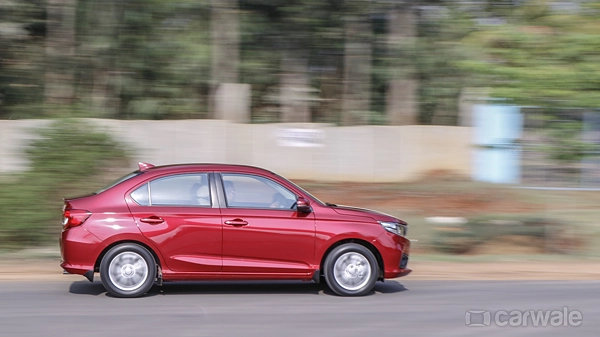Honda Amaze
The first paragraph
contains all the technical details and history of the car and the following
paragraphs will be about my opinion when compared with its competition. The
last paragraph is my final verdict.

To start of the new Amaze is built on a completely new platform, that being said the same engines
have been reworked and used even in the new car. There are the same petrol and
diesel engines on offer. The petrol unit is a 1.2L rev-happy engine is
available in two option of a cvt or a 5 speed manual transmission the power
output is 90hp and 110nm of torque this is the same as the old version. The
manual gets 19.5km/L and the auto gets 19km/L. the diesel engine is also fitted
with a manual or a cvt, it is the first time the diesel is being offered with
the cvt. The manual diesel churns out 100hp and 200nm of torque, shift to the
cvt and the output reduces to 80hp and 160nm of torque, this has been done for
a much smoother power delivery, if it was not reduced then it would have cause
the cvt to constantly slip.
Coming to the
dimensions the Amaze has grown. The amaze is now not based on the Honda Brio
anymore, here are the exact dimensions, L: 3995mm, W: 1685mm and H: 1500mm. the
fuel tank capacity is 35L and the boot space has increased from 400L to 420L
which is class leading. The rear seats have now been pushed back slightly and
there is an increase in legroom by 25mm, this does not compensate for the lack
of rear AC vents and moderate amount of head room, to add to this the rear head
rests are still fixed. Move to the front and you are welcomed by a new touch screen,
which supports apple car play, android auto and a reversing camera and sensors.
This helps the amaze stay up to date. The front seats are new and feature
adjustable head rests for both front seats and height adjustability for the
driver seat. What isn’t that welcoming is the dashboard, it is made with hard
and scratchy plastics, which over shadow the nice AC controls and touch screen.
One thing to note I did not get a chance to actually use the touch screen, but
it looked rather nice and responsive.
how is the ride quality ?
the new amaze is now 17kg lighter than the old amaze even though the car has grown in size, this is due to the use of high tensile steel. the suspension geometry has been changed and is complimented with strengthened suspension parts. All this adds up to giving it a comfortable ride and handling, however certain bumps still cause the thud noise. the steering has a very progressive feedback and is nice to drive in the city.
the new amaze is now 17kg lighter than the old amaze even though the car has grown in size, this is due to the use of high tensile steel. the suspension geometry has been changed and is complimented with strengthened suspension parts. All this adds up to giving it a comfortable ride and handling, however certain bumps still cause the thud noise. the steering has a very progressive feedback and is nice to drive in the city.

Do I like the design?
No, for all the appreciation it has received for looking completely different from the old amaze, I find it to box like. Now things that could uplifted the cars overall appearance from the outside would be, LED or projector headlamps maybe diamond cut alloys for the highest trim.
How much does it cost?
And how expensive is it to maintain?
The Amaze has four
main variants E, S, V, and VX. Want the cvt version then you can chose between
S and V only. In the brochure Honda mentions that the maintenance cost for the petrol is
3,500 rupees and for the diesel it is 4,900 rupees.
There are 5 colors to
choose from and I prefer the lunar silver metallic or the modern steel
metallic.
Would I buy the Amaze
or recommend someone to buy it?
If someone is looking at a spacious, reliable, well put together, and a practical buy I would recommend the Amaze as it is value for money. But then comes its competitors and the segment leading Suzuki Dzire which is more fuel efficient and has advantages such as more services centers less expensive to maintain better looking and even better lights, the list goes on and on. Hence I would say that if you are looking at the two and wondering which is the less expensive one, well it is the Amaze however you will miss out on the features offered by the slightly more expensive Dzire. Hence that brings me to the end of my review.

I liked the recommendation which subtly tilts towards the competition.
ReplyDeleteA
One of observation...In hour eagernes to get the post out of the block, you may have missed a zero or two on the price front.
Overall a good analysis.